Damn, what a year 2023 was, huh?
When I started writing about video games in 2013, I was filled with a lot of hope. Playing The Last of Us had completely shifted my professional trajectory, and I wanted to believe that the rest of the world held games in as high regard as I did. I wanted to share my enthusiasm and desire for a better industry with others. But lately, it doesn’t feel like anyone values anything. Thousands of developers have been laid off in 2023 alone, the Kotaku staff who was here when I started only a year ago has shrunk by more than half a dozen, both due to layoffs and dissatisfaction, and yet, I see millions of people show up to read Kotaku anyway. So clearly, someone out there still cares, right?
Even with the readers tuning into what we do here, shit still feels bleak sometimes. And when despair overtakes me, it’s hard for me to be optimistic or enthusiastic about anything. We want to play, read about, discuss, and elevate games, but somehow, every facet of how we interact with these miracles of programming is crumbling around us. There’s a distinct gap between the things we want and the things we get in this life, and if I knew that before, I really can’t stop thinking about it in 2023.
So what am I supposed to do with a Game of the Year list? I’m not about to parrot some notion of how “great” a year it was for video games when it was so obviously not that. Calling it such would be an insult to the devastation everyone is experiencing right now. I guess it’s worth celebrating whatever joys we can find as the building is on fire. Sure. I‘ll do that. I played a lot of games in 2023 that did more than hold my attention; they defined how I coped with a year that felt like it did nothing but take pieces from me. Several of them were reminders of my own personhood when everything around me threatened to depersonalize all my hopes, dreams, and beliefs.
I don’t know. Enough pontificating about it. I loved a lot of the games I got to play in 2023. Here are the ones that showed up at the top of a bias sorter when I fed them into it.
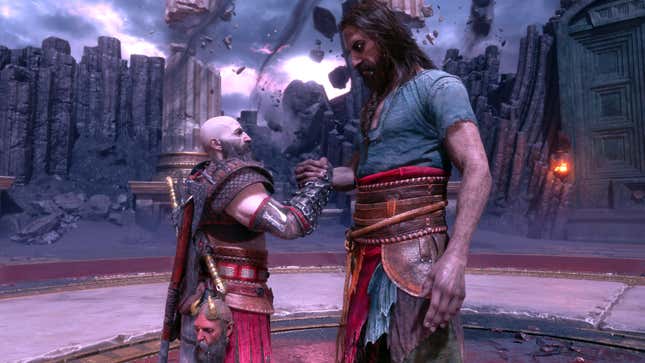
Honorable mention: God of War Ragnarök: Valhalla
As I said during last year’s Game of the Year posts, I didn’t love God of War Ragnarök. It definitely had its moments, but was so overcome by bloat and breakneck pacing that it is mostly a blur to me at this point. The new Valhalla DLC, however, is such a great distillation of everything that is good about the game that it reinvigorated my love for Santa Monica Studio’s reboot series. By focusing on Kratos over an overwhelmingly large cast, exploring his inner turmoil about what it means to be a god after every awful thing he’s done, and framing his introspection as a rewarding and challenging roguelite, Valhalla cuts out all the glut that kept Ragnarök’s best moments from shining through. I’d give it a spot on my list if I wasn’t already committed at this point. But if you haven’t played Valhalla yet, boot the game up again and start it now. It’s free.
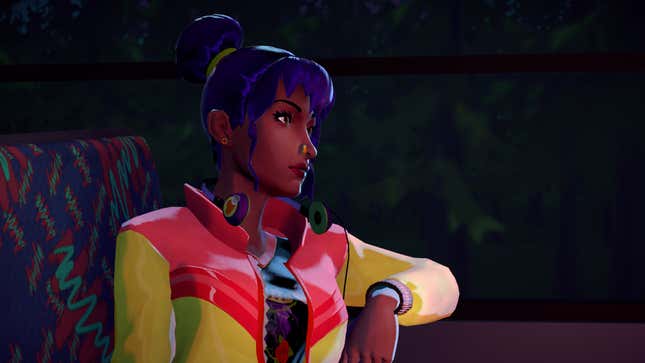
10. Thirsty Suitors
Outerloop Games’ turn-based dating sim/RPG/skateboarding mash-up is compelling in how it boils down every interaction its characters have with each other into a stylized game mechanic. Thirsty Suitors follows Jala, a broken-hearted burnout trying to make things right with the people she’s hurt. It takes the inverse of the Scott Pilgrim “evil exes” story and has Jala facing each of her exes in an exaggerated form, with each snide remark, heartfelt confession, and sly flirt encapsulated in an offensive attack in a battle of hearts and minds. But this is all just theater. Every time one of Jala’s exes takes on a metaphysical form, it’s just bringing all their pain, anger, and love to the surface.
Thirsty Suitors brings out all the ugly and beautiful parts of us in spectacular fashion. Jala’s story has her confronting her own ugliness in the lives of those she once loved, and sometimes doing that work is as hard as any turn-based battle.
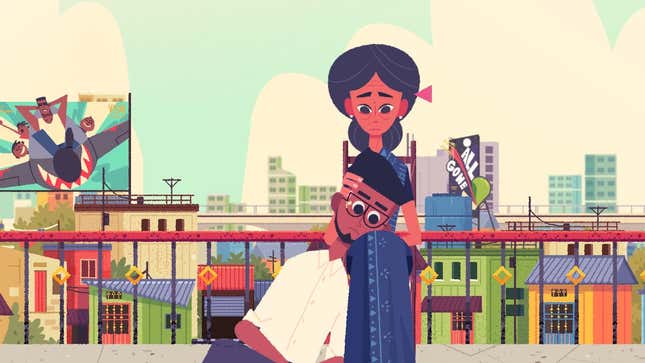
9. Venba
I’m not a great cook. For a lot of my adult life, I’ve relied on takeout and the simplest meals you can fathom. Because of this, I’m not sure if Venba’s cooking puzzles are actually difficult or if I’m inept. Trying to complete recipes from a book whose pages have been worn away by time and the elements is difficult for even a seasoned professional cook, much less an idiot who barely knows his way around a pot and pan. But for all my frustration with the trial and error of attempting to figure out the ingredients I needed to finish a dish and the order of operations for combining them, I was willing to ask for a hint or two if it meant I saw more of Venba’s story as an Indian-Canadian immigrant trying to preserve some part of the life she left behind in the one she has now.
All of those frustrations were deeply rewarded by Venba’s final recipe, which finally extended a hand to my deeply ignorant ass, and I felt like I had a greater understanding of the food I made, as well as who and where it came from.
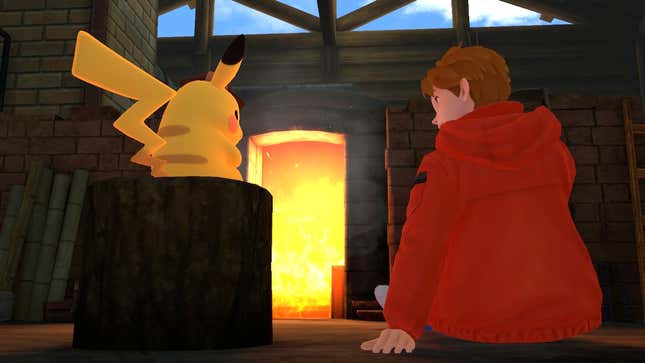
8. Detective Pikachu Returns
Detective Pikachu Returns is not a complex or even great mystery game, but it’s the sequel to one of my favorite Pokémon stories. Since the original 3DS game kicked it off in 2016, the Detective Pikachu subseries has shown a different side of the Pokémon universe that has always been more interesting to me than competitive battling. As an adventure game, Detective Pikachu Returns explores Ryme City, where people and pocket monsters co-exist as equals. It shifts the dynamics and changes the kinds of stories that can be told, letting Pokémon explore new ideas it can’t when you’re concerned with getting eight badges and becoming a champion.
Detective Pikachu Returns finally concludes the original’s story, and I’d argue it pulls it off in more intriguing ways than the 2019 live-action movie. Detective Pikachu brought me back into the Pokémon world when I had been in a rut for several years, and Detective Pikachu Returns seemingly wrapping things up makes me sad because I’d love to see more Pokémon games go this route. Even if it’s the end for the sleuthing Pokémon detective, hopefully this isn’t the last mystery to be solved in this world.
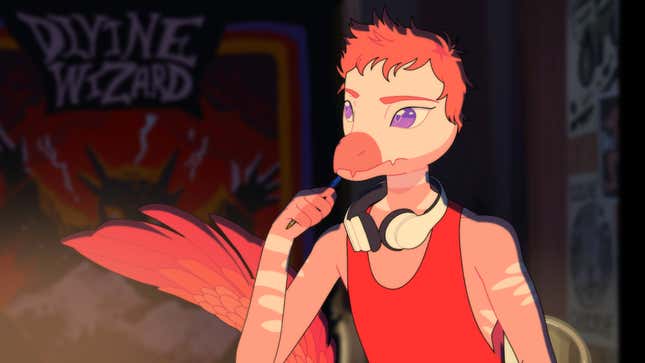
7. Goodbye Volcano High
I was once told by a therapist that trauma is not only bad things that happened to you; it’s also good things that never happened. KO_OP’s Goodbye Volcano High is the kind of high school story that always makes me mourn a teenage life I never had. I didn’t get to grow up with a queer friend group where we experienced that collective understanding. Sure, my cishet friends were lovely, and we all had the universal fears of growing up and becoming adults to contend with, but the depictions of queer teen friendship and visibility in modern media like Goodbye Volcano High and Heartstopper just feel so alien to me. Seeing myself in Reed, the nerdy, queer, punk velociraptor with a crush he’s embarrassed to talk to his friends about, wasn’t on my Bingo card for 2023.
But Goodbye Volcano High is about more than just my pining for a youth I never got to have; it’s about these anthropomorphic teenage dinosaurs mourning the life they’ll never get. Fang and their friends all have lofty dreams of the careers they want, the places they want to see, the people they want to do it alongside, and despite the modern setting, the ending for the dinosaurs remains the same.
Fang’s dreams live on in their music, as the rhythm game visual novel packs some lovely, “sadthem” indie music that I’m still listening to as I write this. But even though I’m listening to their songs, Goodbye Volcano High is all about facing the fact that you won’t get to accomplish everything you want in this life. You can only do so much and meet so many people, and you have to make the most of it instead of wallowing in what’s beyond changing. Even if Reed and Fang are reminders of what I never got, they’re also reminders that I need to make the most of whatever time I do have.
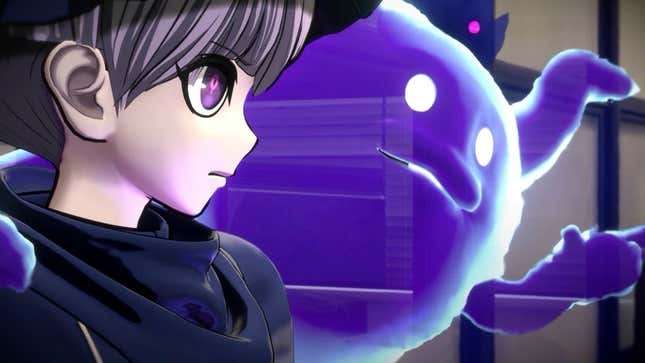
6. Master Detective Archives: Rain Code
Too Kyo Games and Spike Chunsoft’s spiritual successor to the Danganronpa series took some time to grow on me, but Master Detective Archives: Rain Code just further solidified that I am a sucker for this team’s whole deal. Rain Code’s supernatural take on writer Kazutaka Kodaka’s stylish, outlandish murder mysteries doesn’t quite reach its predecessor’s incredible highs, but it still has the well-constructed mysteries, an all-banger soundtrack courtesy of composer Masafumi Takada, and an unwavering belief at its core, even after the most grotesque crimes have been committed, that people can be good. Sure, they can be messy, they can be misguided, but above all, they have a capacity to come together, if you’re willing to extend a hand.
Rain Code’s shift from Danganronpa’s 2D visual novel stylings to a 3D adventure game means technical trouble, and as such, it’s not quite as airtight a video game as its direct inspirations, but when it finds its footing, its emotions are just as raw and its mysteries just as captivating.
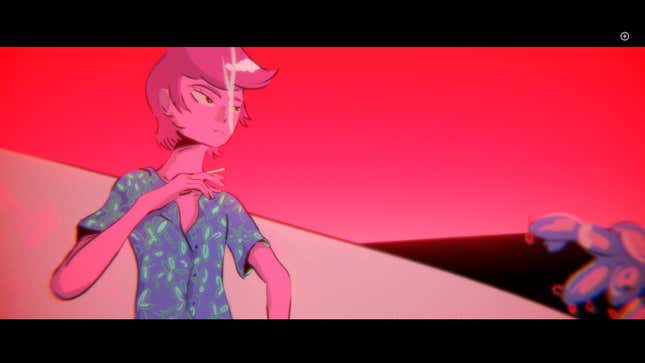
5. Mediterranea Inferno
I see myself in all three of Mediterranea Inferno’s protagonists. The visual novel follows three Italian twinks reuniting as covid-19 restrictions are starting to let up, and it’s clear that in the time of isolation, each of them have not had some of their emotional needs met, leaving them seeking approval, direction, love, or companionship in this often cold world. As you make decisions about what the group will do on their excursion, it becomes clear someone’s someone’s going to be left wanting, and the fallout remains one of the most gripping and terrifying finales I experienced all year.
Those frightening twists and climaxes are what make Mediterranea Inferno scarier than the average horror game. The fact that I see parts of my own insecurities, needs, wants, resentments, and fears in Mediterranea Inferno’s existential drama is terrifying because it’s a reminder of how love, belonging, and connection are human needs just as much as food, water, or air. What does a person become when they’re starving, dehydrated, or suffocating? They become desperate. And desperation is at the root of so many tragedies.
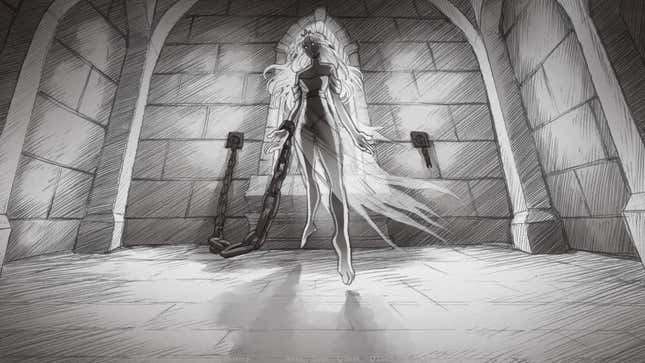
4. Slay the Princess
Black Tabby Games’ time loop horror visual novel Slay the Princess was my biggest surprise of the year, and I wish more of my coworkers here at Kotaku got around to it so I could yell about it more. It starts simple enough: You’re seemingly an amnesiac who’s been tasked with killing a princess who will, allegedly, destroy the entire world if she escapes her prison in a remote cabin basement. You can interrogate your narrating guide all you want, but in the end, you’re still expected to drive a blade through her heart and save everyone. Whether you do that or not is all up to you, but one way or another, you or the princess will die after you make the descent to her prison.
But that’s not the last chance you’ll get to slay the princess. With every attempt to kill her, you’ll wake up again in the same spot outside the cabin, ready to do it all over again. But the princess takes on different appearances and personas each time you meet her. She can appear as a bestial monster, a terrifying doll, or she can just be a young woman who is as confused about things as you are. With each loop, both of your natures become more clear, and the same is true of the alleged world-ending cataclysm you’ve been sent to stop. But Slay the Princess isn’t really about the many lives and deaths of a princess and her assassin. It’s about how both of them unravel every variation of who they could be to find out who they are.
Slay the Princess is built upon the assumptions we have about one another. It structures a time loop around hearsay, presumptions, and two people expected to act upon those with minimal information. Between the dozens of times I walked down the stairs of the cabin and tried to slay the princess, I saw her take on monstrous forms, but most of the time? She was just a person. She was confused, angry, loving, and curious like anyone else. I spent so much time unraveling everything I’d been told about her, and it took time to find out who she really was. Slay the Princess’ greatest horror is the fear of being perceived and the vulnerability it takes to let yourself be known. But once you’re finished slashing at each other’s throats to protect yourself, that’s when the real understanding begins.

3. Street Fighter 6
Every day I wish I could go back to Street Fighter 6 like I did when it first came out. I gathered in private rooms and online lobbies to duke it out with friends and strangers alike, and if it weren’t for my debilitating Overwatch 2 Battle Pass grind, maybe I’d get to devote as much time to improving my Ryu play as I’d like.
Street Fighter 6 is the comeback story of a generation, making good on Street Fighter V’s failings and launching with one of the most robust suites of modes, features, and fighters in all of modern fighting games. Universal additions like the Drive Gauge fill out offensive and defensive abilities for every character while letting Capcom experiment with unique movesets in the in-between, even with long-established mainstays. But Street Fighter 6 isn’t just a return to form for the series’ core mechanics and features, it’s also such a stellar encapsulation of its signature swagger and style. Each character oozes personality, and the paint-style visual effects makes every stoic fist, elegant kick, and devastating throw pop on-screen.
I tend to hop between fighting games as years go by. Though I have my favorites, they usually occupy maybe a year or so of my time before becoming a game I just have fond memories of. I’m not looking to compete in EVO anytime soon, but Street Fighter 6 is the kind of game that can get me to a local competition. Maybe it’s time I head back into the lobby. There are Hadoukens that need to be thrown.
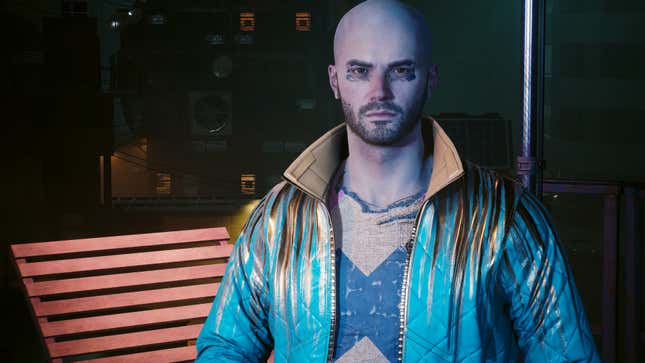
2. Cyberpunk 2077: Phantom Liberty
I don’t think a game has ever turned me around like Cyberpunk 2077. In 2020, I had a begrudging respect for some (most certainly not all) of its writing and characters, and Night City was gorgeous when it wasn’t at risk of falling apart. But now, after the 2.0 update and Phantom Liberty expansion, I think I’m comfortable saying I love Cyberpunk 2077. Somehow, a game I only played out of a work obligation three years ago has become incredibly important to me.
Phantom Liberty is fairly separate from most of Cyberpunk 2077’s story, bringing in its own characters, stories, and ending while derailing the original plot. But even so, it is constantly reflecting on how V, its mercenary protagonist, got to where they are. The reflective story feels like a look back at how Cyberpunk 2077 got here, as well. After selling millions of copies of a broken game, you get a second chance to get it right.
As someone who was there for all of it, the mess of a launch, the next-gen update, and the 2.0 patch that gutted and retooled the entire game, Phantom Liberty feels like relaxing a tense muscle after years. I can recommend the game without that many caveats and can have a conversation about why V’s story of a nobody becoming somebody in the city he loves resonates with me as someone who spent his entire life clawing to find a place he called home.
Cyberpunk 2077 is confounding and frustrating, and somehow has ascended in the list of games I hold most dear. Phantom Liberty is both a victory lap for a game that embodies the worst tendencies of excess in this industry, and a reality check for the systemic issues in how games are made. In the end, what’s left standing after all this carnage is a pretty great RPG with a moving story about what we live for, and Phantom Liberty is a testament to the best parts of it.
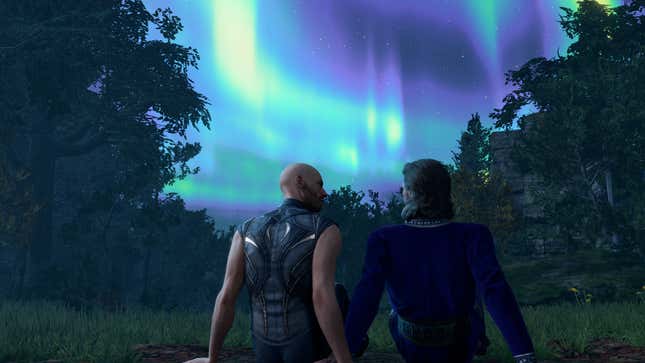
1. Baldur’s Gate 3
It’s been a while since a video game got me in that fanfiction-level brainrot. But right now, I have a doc with notes on a story I want to write about Shep, my Baldur’s Gate 3 Warlock who has a Tiefling Guardian who looks like my other Baldur’s Gate 3 character, Arendelle. See, he’s my character in my co-op campaign and he’s a Bard, and his Guardian looks like Shep. I’ve been thinking about writing a story about how, before Larian’s RPG, Shep and Arendelle were lovers in Avernus, one of the layers of Hell in the Forgotten Realms. And I was thinking, what if Shep became a Warlock in an effort to get Arendelle out of Avernus and into…wait, sorry, we were talking about Game of the Year. My bad, I get distracted and fall down the Baldur’s Gate 3 hole if I think about it too long.
Choice-based RPGs are always about self-expression to me. We create characters, make decisions, and craft our builds, all in the name of injecting a piece of ourselves into worlds like Baldur’s Gate 3’s take on Faerûn. As a video game, Baldur’s Gate 3 is always going to be beholden to some code that the team at Larian is able to put together, but I don’t think I’ve seen a game of this scale feel so open to me. My Warlock is a canvas on which I paint all my favorite colors, scribble my deepest desires, tattoo my views on his heart, and shape him into the closest facsimile of me I can. His Eldritch Blast cantrip is the tool with which I fight for what I believe in, the arms with which I hug my best friend Karlach after her infernal engine has cooled, and the hand I use to hold the magical hands of my lover Gale.

I recognize how long it’s been since I had a game that let me insert myself into an RPG world like this. But Baldur’s Gate 3’s density, reactivity, and near-boundless depth have probably made me feel more rewarded than any other game just for expressing myself in every decision, big and small. I wear Karlach’s armor made of belts because I want to dress slutty, even as I’m trying to fight fantastical monstrosities. I specialize in charisma because I want to talk my way out of as many situations as possible instead of relying on my patron’s “gifts.” I pursue Gale as I try to bring him back to reality, lest he, like my Warlock, fall from grace as he reaches for new ambitions.
Everything I do in Baldur’s Gate 3, whether it’s world-shattering or just what I chose to wear that day, feels significant because those decisions are mine, and they feel like they’re mine. It’s one thing for a game to offer you the freedom to fuck around in an open-world map, blowing up shit and murdering civilians just because you can. But Baldur’s Gate 3’s willingness to weave that freedom into its game design is why I feel more ownership of everything I’ve done in Larian Studio’s stunning achievement. Yes, one day, when everyone’s wrung it dry and scoured its code, we’ll know the limits of what we can do. But for now, Baldur’s Gate 3 is the closest I’ve ever felt to actually existing in a video game’s fantastical world. As the possibilities of where my story could go continue to fuel my desire to expand upon them further in my own writing, I’ll exist in it a little while longer.
























